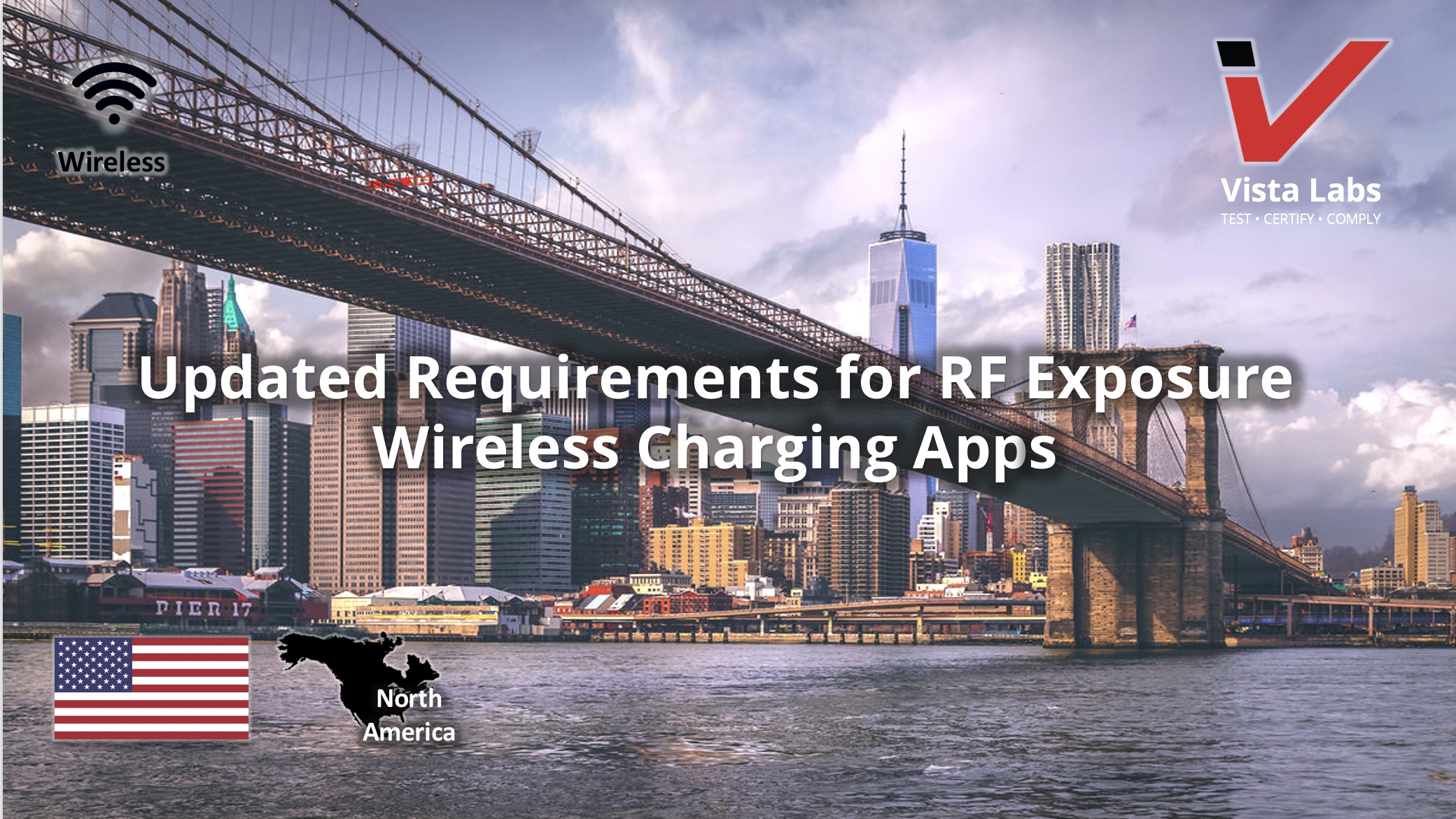The FCC updated RF exposure requirements are applicable depending on how the device operates, and if there is communication between the charger and device being charged.
Wireless power transfer (WPT) devices operating at frequencies above 9 kHz are intentional radiators and are subject to the FCC rules.
Devices specifically intended for use for wireless power transfer, or inductive charging, require FCC guidance for frequency exposure review. This includes Part 18 devices. It may be necessary for the responsible party (manufacturer) to seek guidance from the FCC on specific WPT devices by submitting a KDB inquiry.
Coils may be employed in portable applications such as charging pads, permanently embedded in furniture or installed in vehicles. RF exposure potential to users and bystanders is expected to vary according to factors inherent to the design of individual systems, which generally requires different evaluation considerations to show compliance.
High power devices, devices designed for power transfer at distance, operations with high leakage fields, magnetic resonance power devices that rely on loose inductive coupling and coupling at distance, and medical devices are not covered under this KDB Publication. Individual KDB inquiries1 must be filed for each of these types of devices to obtain further guidance for compliance evaluations.
Updated RF exposure requirements
- Consumer wireless power transfer devices approved under Parts 15 and 18 in some cases have to demonstrate compliance with RF exposure requirements. The potential for exposure must be assessed according to the operating configurations of the wireless system and the exposure conditions of users and bystanders. RF exposure must be evaluated with the client device(s) being charged by the primary at maximum output power. The RF exposure requirements must be determined in conjunction with the device operating characteristics, according to the mobile and portable exposure requirements.
- SAR and MPE limits do not cover the frequency range for wireless power transfer applications which operate below 100 kHz and 300 kHz respectively; therefore, RF exposure compliance needs to be determined.
- Evaluation of RF Exposure test data for determining compliance of wireless power transfer (WPT) systems (both portable and not) operating at frequencies below 100 kHz is provided on a case-by- case basis following a KDB inquiry. In these situations, a WPT device may be considered acceptable when supporting data from measurements and/or numerical simulations show that, for all the positions of space relevant for the body exposure, the external (unperturbed) temporal peak field strengths do not exceed the following reference levels: - 83 V/m for the electric field and - 90 A/m for the magnetic field
Based on the design and implementation of the power transfer application, it must be clearly identified if mobile or portable RF exposure conditions apply. Devices that are installed to provide separation of at least 20 cm from users and bystanders may qualify for mobile exposure conditions. For some conditions where users and bystanders may be exposed at closer than 20 cm.
For devices designed for typical desktop applications, such a wireless charging pads, RF exposure evaluation should be conducted assuming a user separation distance of 15 cm. E and H field strength measurements or numerical modeling may be used to demonstrate compliance. Measurements should be made from all sides and the top of the primary/client pair, with the 15 cm measured from the center of the probe(s) to the edge of the device. Emissions between 100 kHz to 300 kHz should be assessed versus the limits at 300 kHz
Portable exposure conditions from 100 kHz to 6 GHz are determined with respect to SAR requirements. Existing SAR systems and test procedures are generally intended for measurements above several MHz. While numerical modeling can be an alternative, the constraints of substantial computational resources at low frequencies could introduce further limitations. Under these circumstances, including operations below 100 kHz, the Commission may consider a combination of analytical analysis, field strength, radiated and conducted power measurements, in conjunction with some limited numerical modeling to assess compliance.
Depending on the operating frequency, existing SAR and MPE measurement procedures may be adapted to evaluate wireless power transfer devices for compliance with respect to mobile or portable exposure conditions. If the grantee or its test lab have any questions regarding RF exposure evaluation, they should contact the FCC Laboratory with sufficient system operating configuration details to determine if RF exposure evaluation is necessary and, if required, how to apply specific test procedures.
Below 100 MHz, when SAR testing is required and the device is operating at close proximity to persons, information on device design, implementation, operating configurations, exposure conditions of users and bystanders are needed to determine the evaluation and testing requirements. In addition, the influence of nearby objects may also need consideration according to the wireless power transfer system implementation; for example, the effects of placing the device, its coils or radiating elements on or near metallic surfaces.



